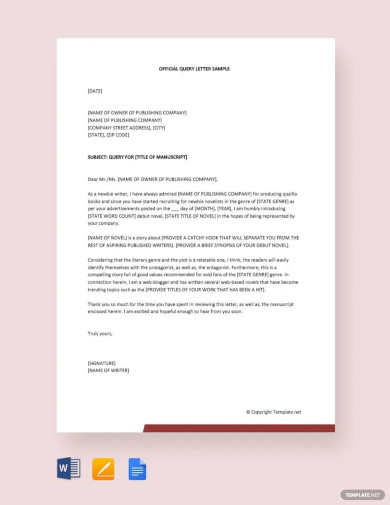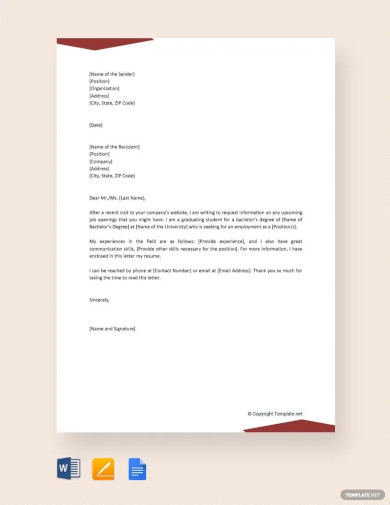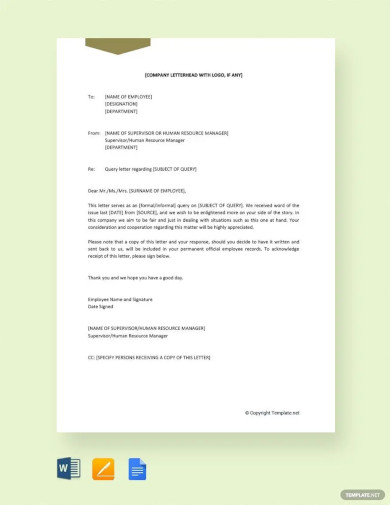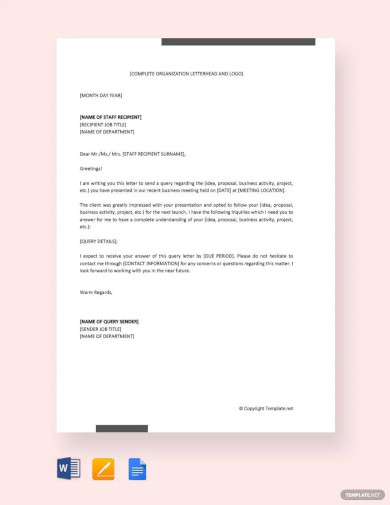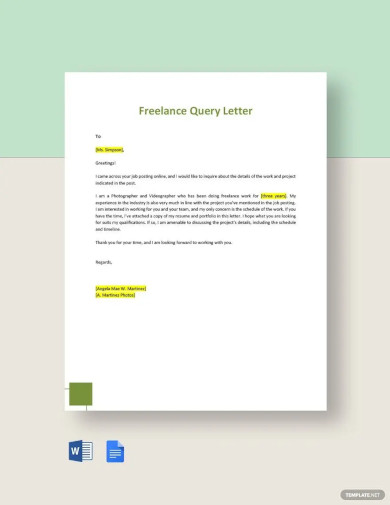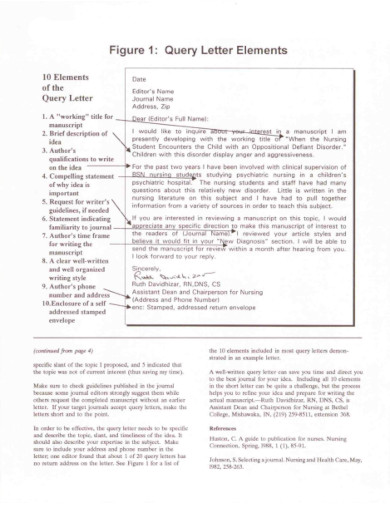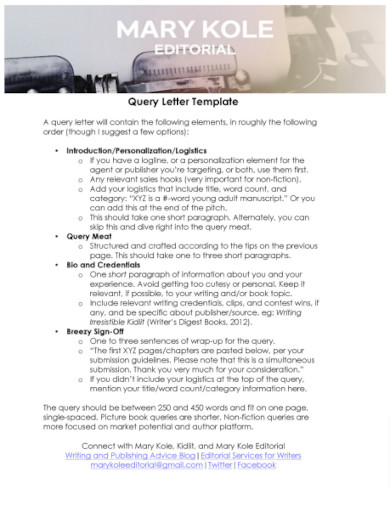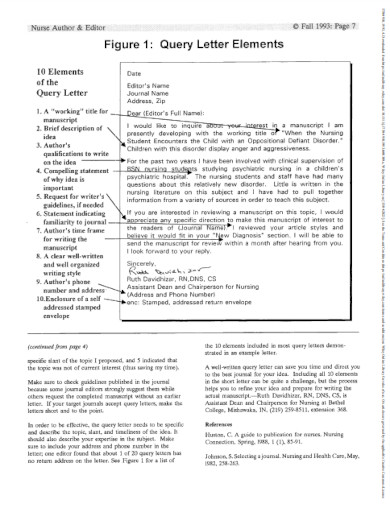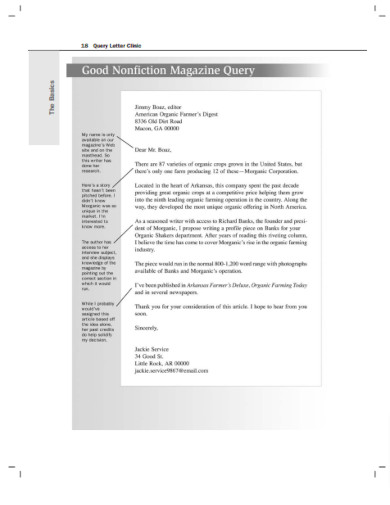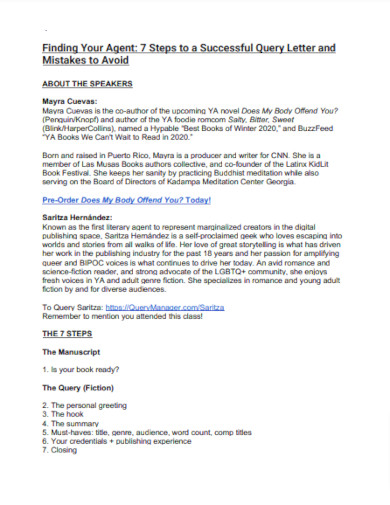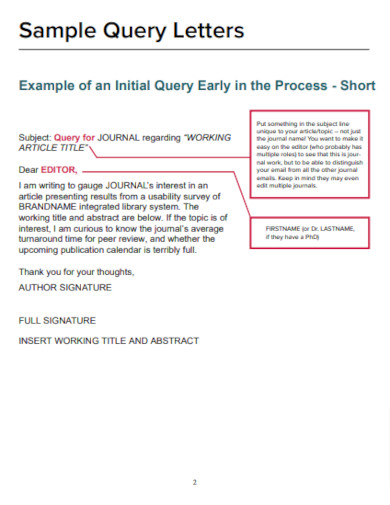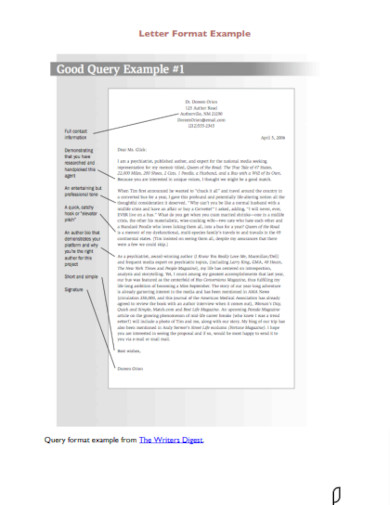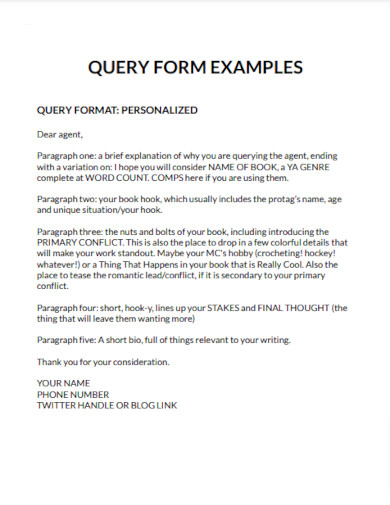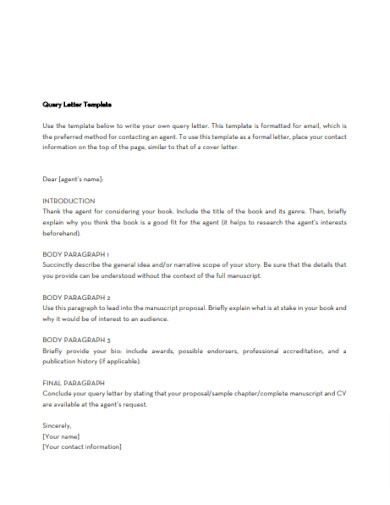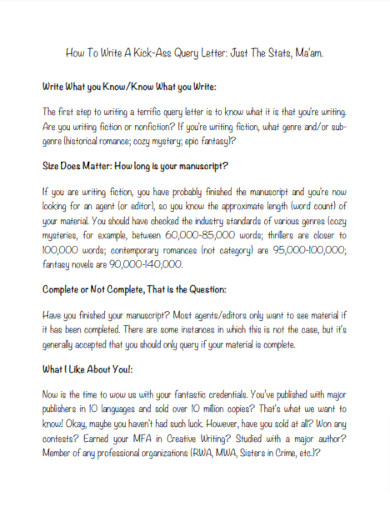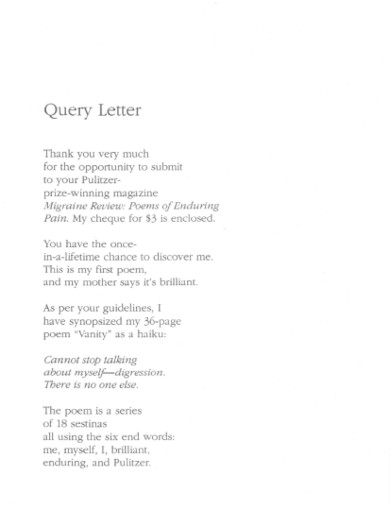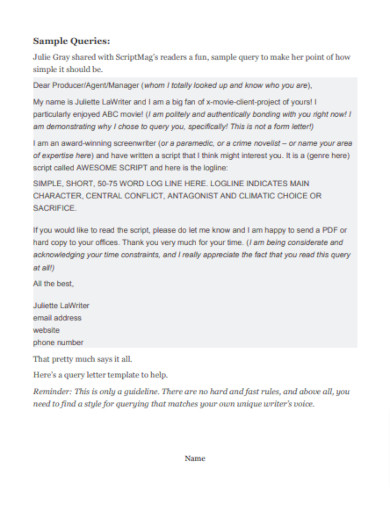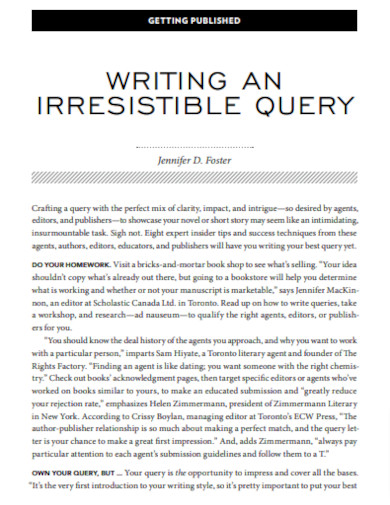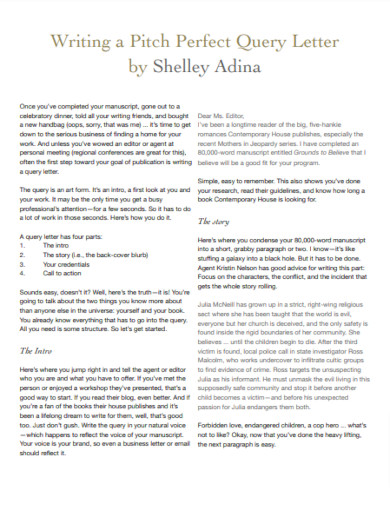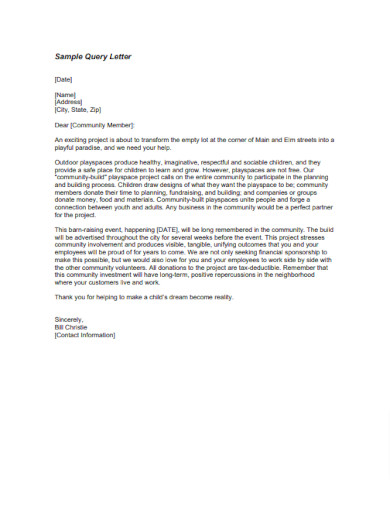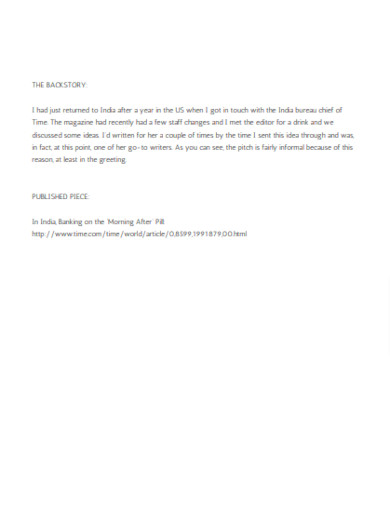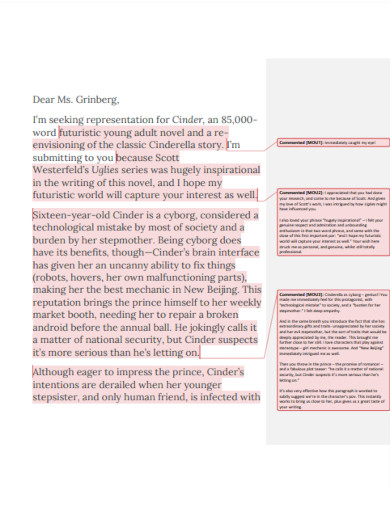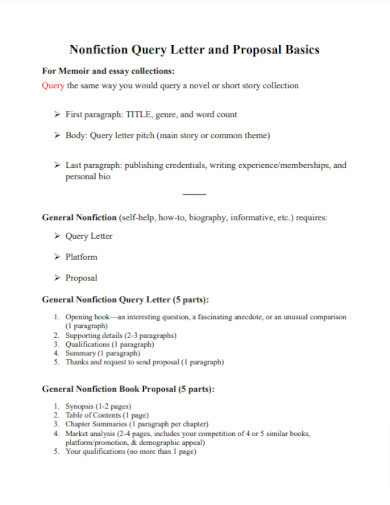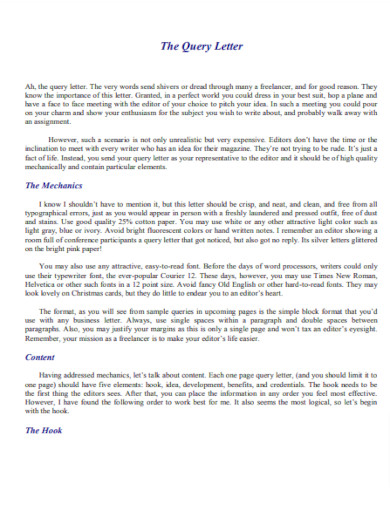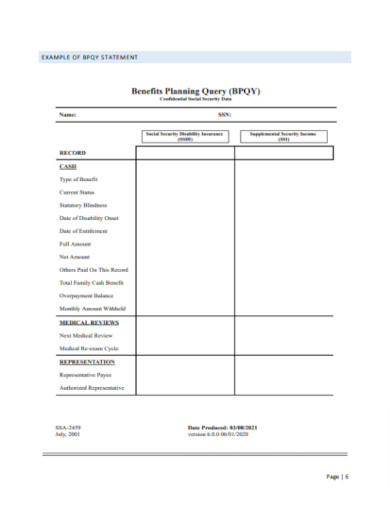25+ Query Letter Examples to Download
If you’re an aspiring writer seeking to get published, then you’ll need to craft an effective Query Letter. A Query Letter is your first opportunity to make an impression on agents or publishers, and it’s essential to get it right. In this article, we’ll explore some examples of Query Letters and offer tips on how to create a professional and effective letter that will increase your chances of getting noticed.
bb_toc content=”][/bb_toc]
Official Query Letter Sample
Query Letter
Query Letter to Employee
Query Letter Sample to a Staff
Freelance Query Letter
Elements of an Effective Query Letter
Query Letter Format
Simple Query Letter Example
Query Letter Clinic Template
Standard Query Letter
Query Letter Samples for Library
Query Letter Checklist Template
Query Form Examples
Query Letter Template
Basic Query Letter Example
Editable Query Letter
Printable Query Letter
Query Letter Logline
Irresistible Query Letter
Pitch Perfect Query Letter
Sample Query Letter Example
Modern Query Letter
Query Letter Annotated
Nonfiction Query Letter
Creative Query Letter
Planning Query Letter
What is a Query Letter?
A Query Letter is a one-page letter that writers send to agents or publishers to introduce their work and request representation or publication. It should be concise, engaging, and professional, and should highlight the unique selling points of your work. Your Query Letter should include a brief synopsis of your work, your credentials, and a closing that thanks the recipient for their time and consideration.
Tips for Writing an Effective Query Letter:
- Address the recipient professionally, including their full name and proper title.
- Use a professional tone and avoid using slang or colloquial language.
- Keep your letter concise and to the point.
- Include a brief synopsis of your work, highlighting its unique selling points.
- Highlight your credentials and any relevant experience or awards.
- Follow the guidelines provided by the recipient, including submission requirements and formatting.
How to Write a Query Letter
Writing a Query Letter can be a challenging task, but by following these steps, you can create an effective letter that showcases your work and increases your chances of getting noticed by agents or publishers:
Step 1: Research
Before you begin writing your Query Letter, research potential agents or publishers who may be interested in your work. Look for agents or publishers who specialize in your genre and have a track record of successful publications.
Step 2: Address
Address the recipient of your Query Letter professionally, including their full name and proper title. If you’re not sure of their title, do some research or ask for clarification.
Step 3: Introduction
Start your Query Letter with a brief introduction that includes your name, the title of your work, and the genre. Make sure to grab the recipient’s attention and highlight what makes your work unique.
Step 4: Synopsis
Provide a brief synopsis of your work, highlighting its unique selling points. Keep it concise and to the point, focusing on the plot and main characters.
Step 5: Credentials
Highlight your credentials and any relevant experience or awards. This can include previous publications, writing workshops or degrees, or relevant work experience.
Step 6: Closing
Close your Query Letter by thanking the recipient for their time and consideration. Include any relevant information about how they can contact you, such as your email address or phone number.
Step 7: Proofread
Before sending your Query Letter, make sure to proofread it carefully for spelling and grammar errors. You want to present a professional and polished letter that showcases your letter writing skills.
FAQs
Can I submit my Query Letter via email?
Yes, many agents and publishers accept Query Letters via email. Make sure to follow their submission guidelines and include all necessary information in your email.
Should I address the recipient by their first name in my Query Letter?
It’s best to address the recipient by their full name and proper title unless they have specifically requested to be addressed by their first name.
Can I send a Query Letter to multiple agents or publishers at once?
Yes, but it’s important to do your research and make sure you’re targeting agents or publishers who are a good fit for your work. Make sure to follow each recipient’s submission guidelines and avoid sending mass emails.
In conclusion, crafting an effective Query Letter can be a challenging task, but by following the right format and including the right information, you can create a letter that showcases your work and increases your chances of getting noticed. Whether you’re writing an official letter or an email, make sure to follow professional letter format, include your letter address, and proofread your letter carefully for spelling and grammar errors. With practice and persistence, you can create a Query Letter that will help you achieve your publishing goals.



